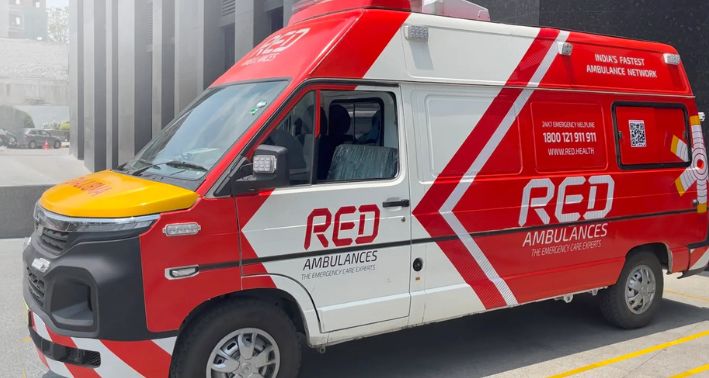How ICU, Ventilator, and Oxygen Ambulance Services Deliver Critical Care on the Move
In the complex world of emergency medical care, transportation is more than just getting a patient from point A to point B. For critically ill patients, the journey to the hospital itself must include continuous medical supervision and life-saving support. This is where specialized ambulance services—ICU ambulance, ventilator ambulance, and oxygen ambulance—step in, transforming the traditional ambulance model into advanced mobile healthcare units.
These ambulances are not all the same. Each one is designed with specific equipment and capabilities to address varying levels of medical emergencies. Understanding their roles can help healthcare professionals, emergency responders, and even families make informed decisions in critical moments.
ICU Ambulance: The Mobile Intensive Care Unit
An ICU ambulance service is designed for patients who are critically ill and require intensive monitoring during transportation. These ambulances are equipped with high-end medical tools typically found in a hospital’s intensive care unit. They include:
- Multi-parameter patient monitors
- Defibrillators
- Infusion pumps
- Portable suction units
- Advanced life support (ALS) systems
Such ambulances are typically staffed with a team that includes critical care nurses and sometimes physicians or paramedics trained in handling complex medical emergencies. These services are most often used for:
- Inter-hospital transfers of critical patients
- Trauma patients needing continuous life support
- Cardiac or stroke emergencies requiring monitoring en route
The ICU ambulance provides not only safe transport but also uninterrupted care—a key factor that improves survival chances.
Ventilator Ambulance: Breathing Support on the Road
A ventilator ambulance service caters to patients who require assisted breathing during transport. These are often patients with:
- Severe respiratory failure
- Traumatic brain injuries
- Chronic illnesses that impair respiratory function
- Conditions like ARDS or severe pneumonia
These ambulances are fitted with mechanical ventilators that can be customized to deliver breaths at different pressures, rates, and volumes based on the patient’s needs. The onboard medical team is trained to manage ventilator settings, monitor oxygen saturation, and respond to any complications.
What sets ventilator ambulances apart is their ability to maintain precise respiratory control, which is especially crucial for patients being transferred from one hospital to another or from home to an advanced care facility.
Oxygen Ambulance: Fast Relief for Respiratory Distress
For many patients, immediate access to supplemental oxygen can be life-saving. An oxygen ambulance service is designed for cases where oxygen support is essential but intensive care isn’t immediately required. These ambulances are equipped with:
- Portable and fixed oxygen cylinders
- Flow meters and humidifiers
- Nasal cannulas and oxygen masks
- Pulse oximeters for saturation monitoring
Common use cases include:
- COPD exacerbations
- Severe asthma attacks
- Sudden breathlessness due to heart conditions
- Elderly patients in distress
While these ambulances don’t carry the full array of ICU equipment, they serve as a vital bridge to stabilize patients until they can reach a facility with more comprehensive care.
The Critical Role of Trained Personnel
Equipment alone doesn’t save lives—trained professionals do. Whether it’s an ICU, ventilator, or oxygen ambulance, the effectiveness of the service heavily depends on the capabilities of the attending medical crew. Teams are trained not just in handling emergencies, but also in making dynamic decisions based on patient vitals, symptoms, and the road environment.
For instance:
- In a ventilator ambulance, paramedics might need to adjust PEEP (Positive End-Expiratory Pressure) levels on the fly.
- In an ICU ambulance, staff might initiate medication infusions mid-transport based on patient monitoring.
- In an oxygen ambulance, responders may need to identify hypoxic signs quickly and administer high-flow oxygen to avoid deterioration.
The synchronization between equipment and human expertise is what defines the quality of care during transit.
Choosing the Right Ambulance for the Situation
Selecting the appropriate ambulance depends on:
- Severity of the patient’s condition
- Required medical support during transit
- Duration and distance of the transport
- Availability of nearby facilities and specialists
For example, a patient on long-term mechanical ventilation needs a ventilator ambulance, not just oxygen. A patient recovering from surgery but in unstable condition would be safer in an ICU ambulance. Knowing these distinctions can reduce delays in care and improve outcomes.
Final Thoughts: Bridging the Gap Between Home and Hospital
Ambulance services are often the first point of contact in a medical emergency. As healthcare systems grow more advanced, the expectations from ambulance services grow, too. Today’s ICU, ventilator, and oxygen ambulances offer not just transport—but stabilization, monitoring, and even life-saving interventions en route.
This evolution of emergency transport services is crucial in improving survival rates, particularly in areas where hospitals may be miles apart or where road conditions slow down access to advanced care. By offering immediate and mobile critical care, these specialized ambulance services bridge the gap between the onset of a medical emergency and hospital-based treatment.


Leave a Reply
Want to join the discussion?Feel free to contribute!